Photographs by the author, or kindly provided by Leighton House, variously attributed. [You may use the author's without prior permission for any scholarly or educational purpose as long as you (1) credit the source and (2) link your document to this URL in a web document or cite the Victorian Web in a print one. Click on the images to enlarge them.]

ituated in the Holland Park area of Kensington, Leighton House is that rarest of delights: a private house fully reflecting and preserving the oriental tastes of the later nineteenth-century. It was the home of Frederic Lord Leighton, a distinguished public figure, both painter and sculptor, and for nearly twenty years the President of the Royal Academy. But while Leighton himself was very much part of the Victorian establishment, his house in London was, pre-eminently, a tribute to his extensive travels in the Middle East. On 15 October 2022, it was reopened to the public after a costly restoration and extension programme.
Living at the heart of the artistic commuity here, Leighton always meant to share his enthusiasm for the orient with others. The recent work on it has fulfilled this intention. From its renowned Arab Hall to its drawing room, dining room and library, and upwards to its studios and Silk Room gallery, exoticism prevails. Here is the domed and tiled Hall in all its re-burnished splendour, and other rooms and even passageways resplendent with Middle Eastern designs.
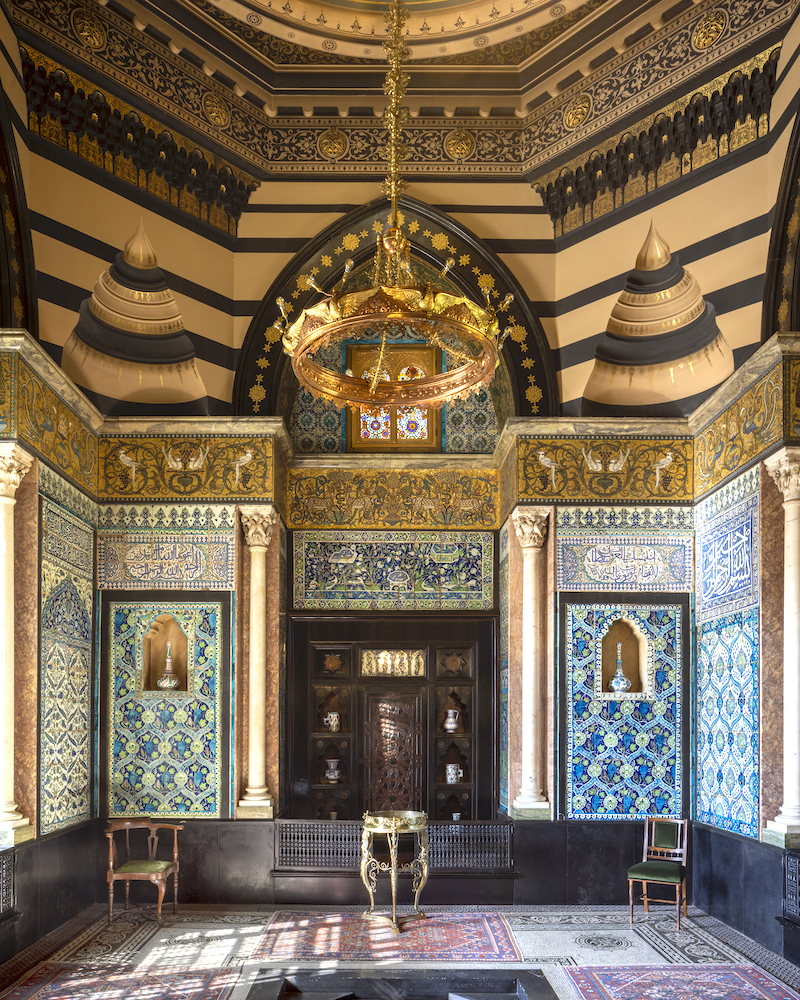
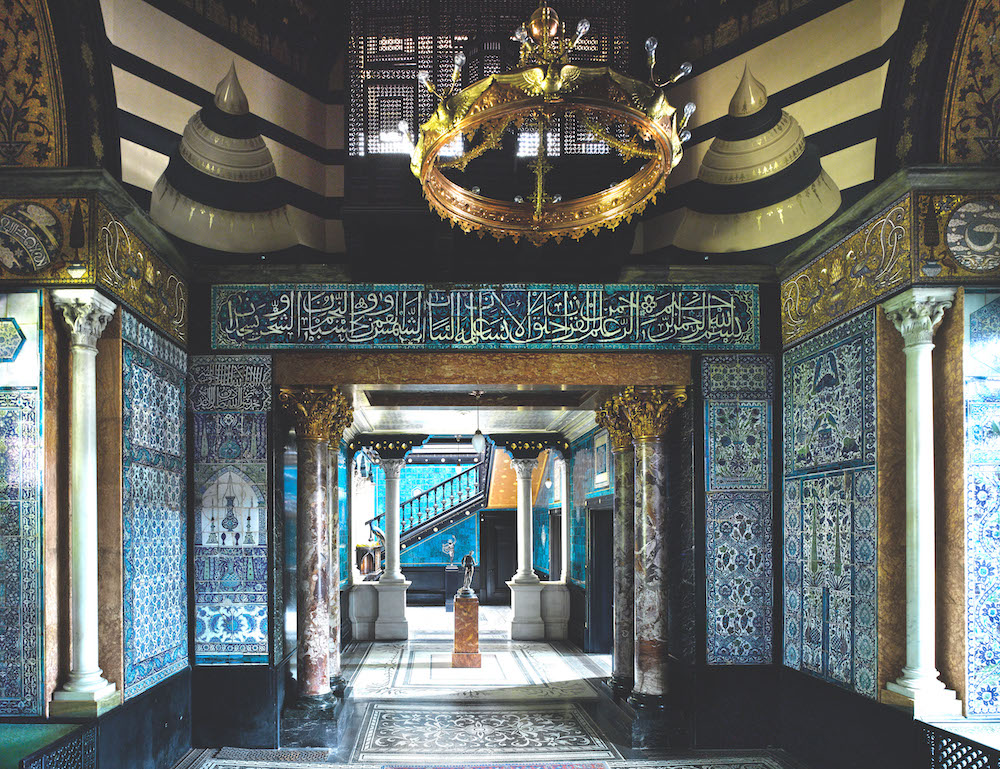
Two photographs, © Leighton House Museum, Royal Borough of Kensington and Chelsea. Left to right: (a) Inside the Arab Hall, courtesy of Dirk Lindner. (b) Looking out of the Arab Hall to the Narcissus Hall, courtesy Will Price. (c) The Staircase Hall, courtesy Dirk Lindner.
Furniture, either original pieces or exquisitely detailed replicas, blend with artworks, ceramics, tesserae and textiles in architectural spaces redolent of their place of origin.
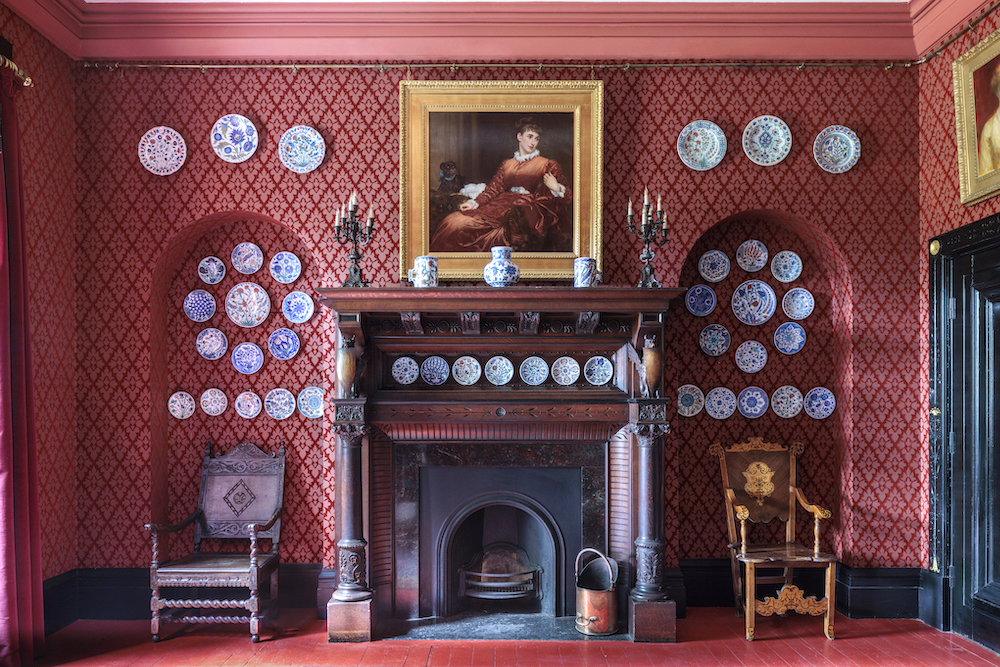
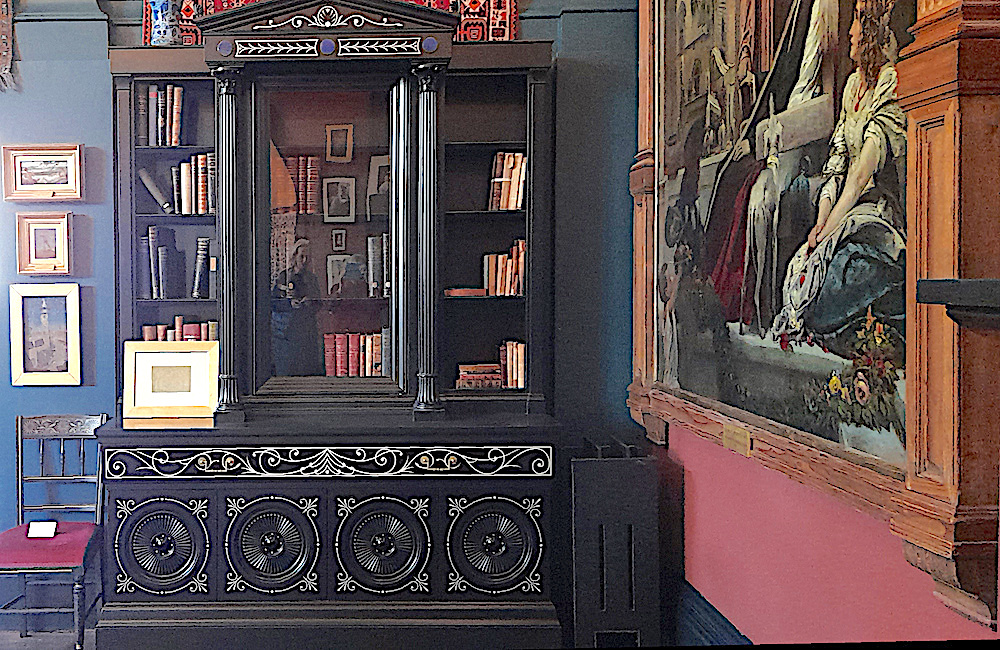
Left: Close-up of Iznik ceramics in the Dining Room. © Leighton House Museum, Royal Borough of Kensington and Chelsea, courtesy Dirk Lindner. Right: One of the handsomely worked pieces, harmonising with its surroundings, acquired or commissioned for the house during this recent restoration. Author's photograph.
There is much to take in and admire at every turn. Newer items range from the bookcase shown on the right above, specially made to the designs of the original architect, George Aitchison, to the small but remarkably elegant Victorian-era stove in one corner of the Winter Studio. All seem to reflect the artistic sensibility that Leighton was so keen to express in his surroundings.
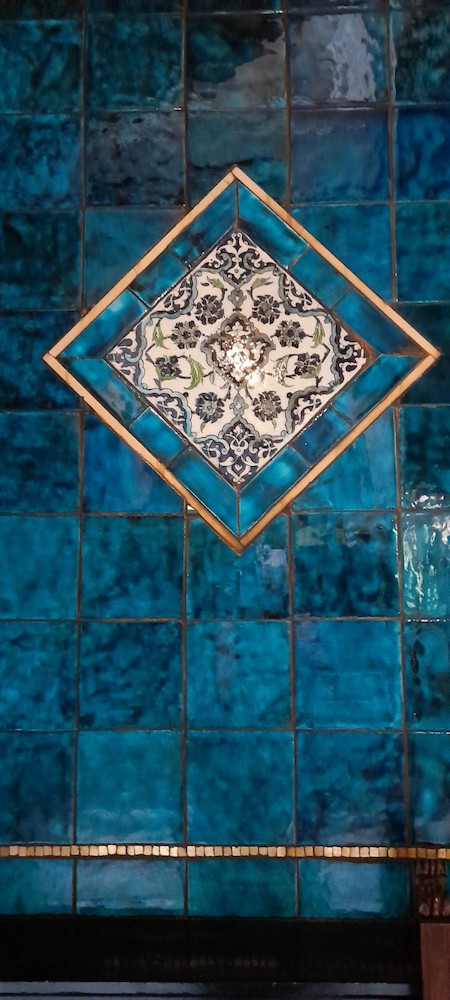
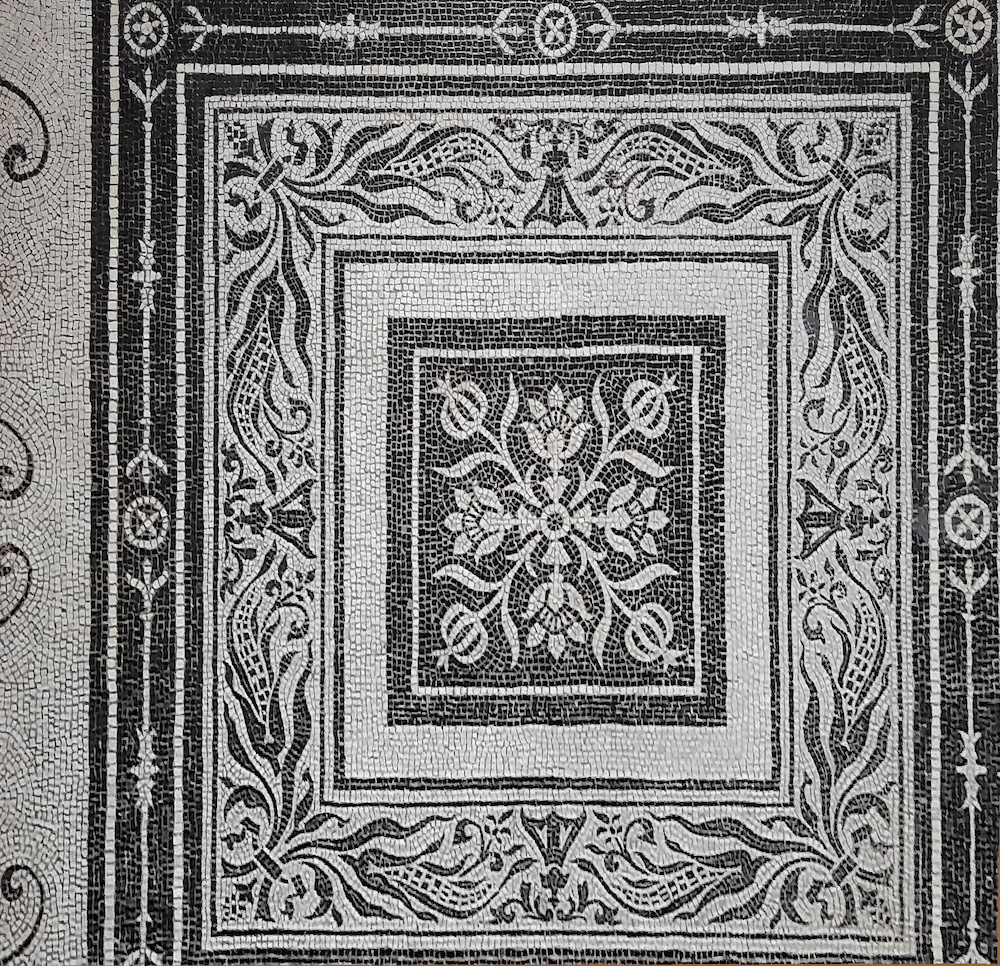
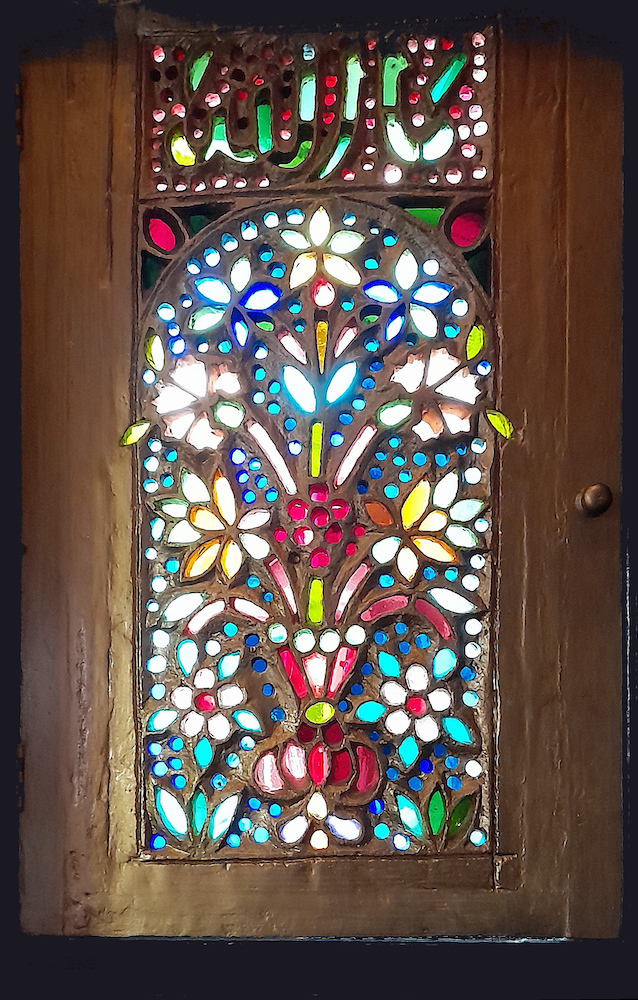
Details. Left to right: (a) Close-up of tiling. (b) Close-up of tesserae flooring. (c) A small stained glass window. Author's photographs.
Upstairs
Upstairs areas speak, as they should, of the past owner's occupation. These are studios filled with light, and all the paraphernalia of Leighton's profession. It is easy to imagine his models coming up to them by their own narrow staircase, now revealed again to public view. This was their workspace as well as his. Somehow of a piece with this workaday element is the use of cast iron pillars to support the Winter Studio, which was added in the late 1880s: these too had previously been hidden.
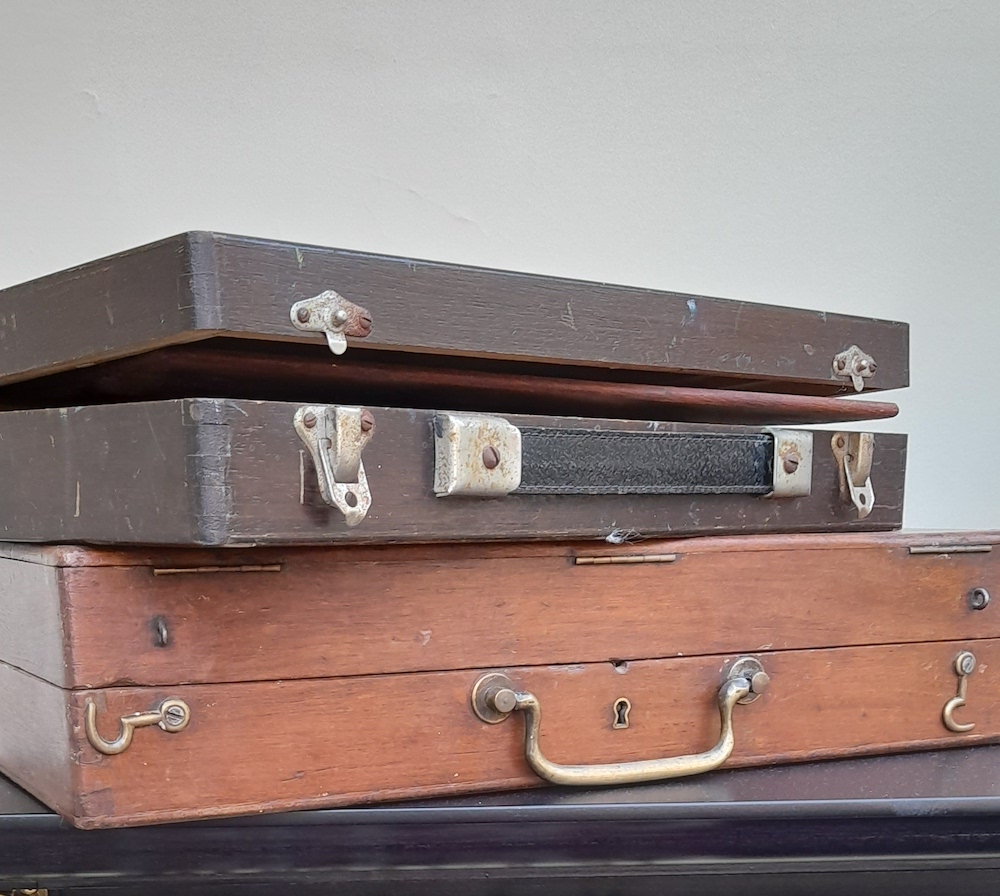
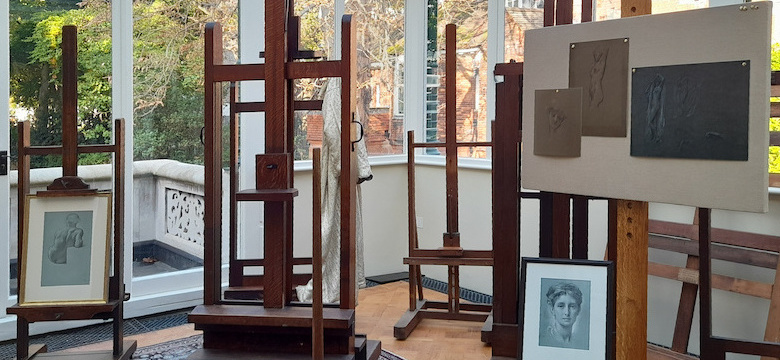
The artist's studio, with easels, paintbrushes and paintboxes at the ready. Author's photographs.
But domes, columns and other exotic features are not confined to the Arab Hall and the ground floor of the house. Even here on the first floor, Leightons' friends and visitors would frequent the larger studio: it served as his showroom, and, towards the end of his life, led to another addition, the picture gallery in the Silk Room.
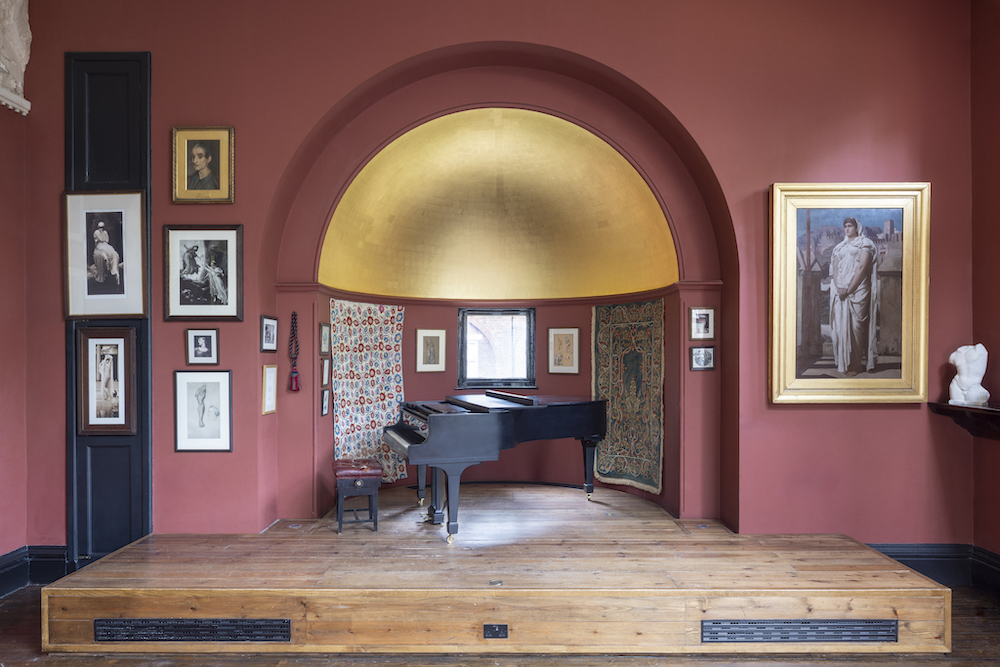
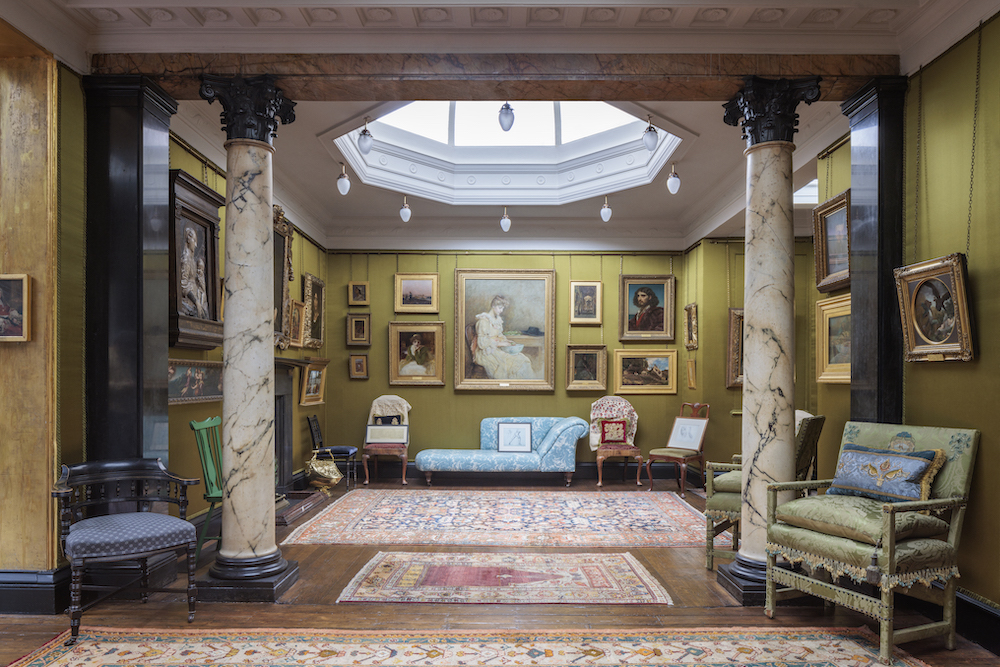
Also on the first floor. Left: The stage and piano in Leighton's study. Right: The Silk Room, off the Winter Studio. Both photographs Leighton House © RBKC, courtesy Dirk Lindner.
In his picture gallery Leighton could display the work of those in his artistic circle. It is fitting, then, that the house should have reopened with a similar choice of paintings. Several of the artists represented in "Artists and Neighbours: the Holland Park Circle" (running until 19 February 2023) deserve to be much better known: personal favourites here are a seascape, Fishing Boats off the Coast of Cornwall (1883) by the Scottish artist, Colin Hunter (1841-1904), and two striking portraits by Emilie Isabel Barrington (1841-1933).
Among the many exotic motifs in this part of the house is the mashrabiya, a pierced wooden screen that he had purchased in Cairo. This provided a through-view from the studio's antechamber to the marvels beneath. Poignantly enough, Leighton's private quarters were quite humble: his narrow iron bedstead stands in a bedroom which is sparsely furnished, despite the pictures round the walls. His public life was what really mattered to him.
The East Wing Extension
The house's past is well documented. Its unique historic features needed to be scrupulously preserved and maintained, as indeed they have been. Yet it needed, equally urgently, to be made welcoming for present-day visitors. The Museum (for such it is) has now acquired new facilities and gallery space in a discreet and functional east wing. This in no way detracts from the immersive experience provided by the main part of the house. The airy modern gallery in this wing is currently (also until 19 February 2023) showing a selection of Leighton's exquisite drawings.
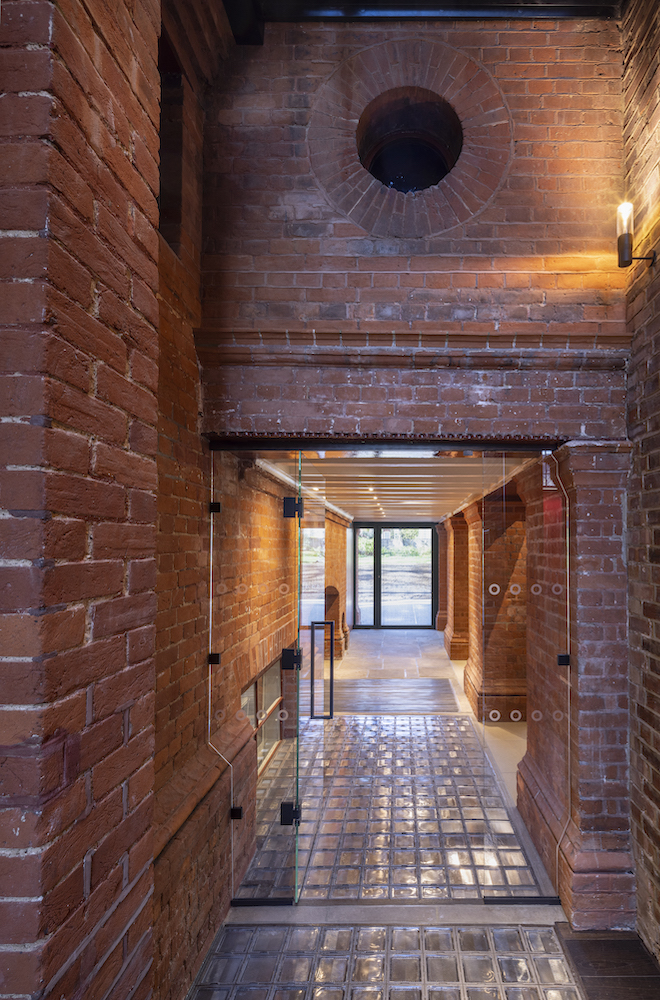
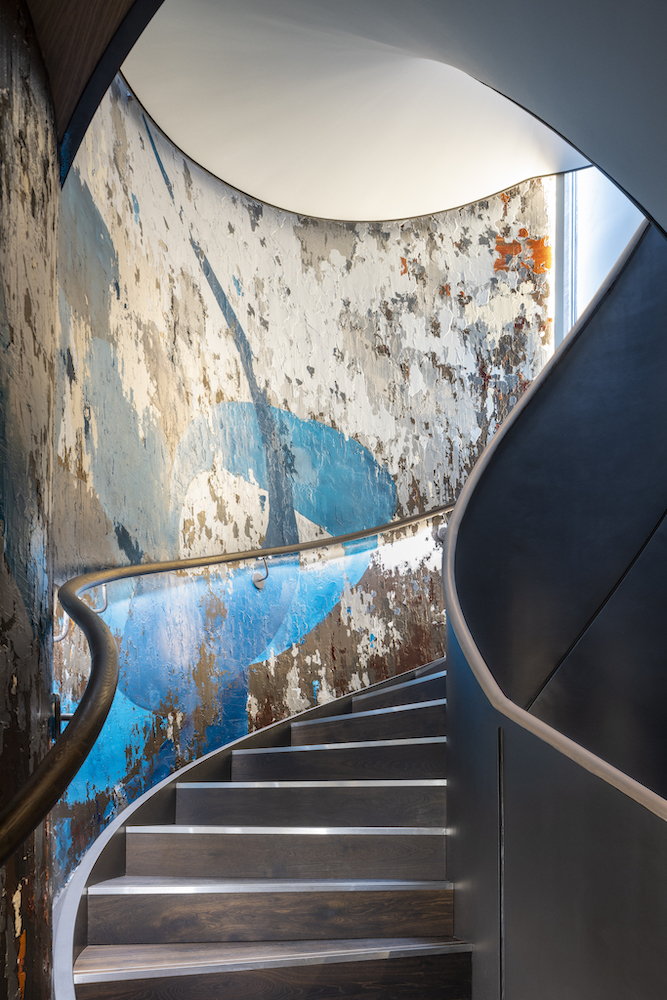
Left: Entrance to the east wing with visitors' facilities. Right: the stairwell installation "Oneness" by Shahrzad Ghaffari. Both photographs Leighton House © RBKC, courtesy Dirk Lindner.
In addition to their other challenges, the planners and curators had another issue to address: how to encourage new generations to connect with Leighton House now. They found an answer in several new commissions. A lift has been installed here for those who need it, but the helicon stairway into the main house offers the most exhilerating of these new works. With its vibrant swirl of deep turquoise, echoing the colour of William De Morgan's glorious tiles on the ground floor, Shahrzad Ghaffari's installation sets up the very process that Leighton wished to accomplish, of enveloping his guests in the mysterious orient that he loved.
A final word, especially for those who plan to go on from here to explore nearby Sambourne House on a joint admission ticket: one of the facilities in the new wing is the appropriately named De Morgan Tearoom. A stop-over here will help to set you up for another very different but equally mind-blowing "artist's home" experience!
Links to related material
- Leighton House (an older account, starting with the exterior)
- Mary Thornycroft's bust of HRH Princess Louise (in the Winter Studio)
- Mary Thornycroft's bust of Emilie Isabel Barrington (in the Winter Studio)
- A Moment of Peril in the garden of Leighton House
Created 18 October 2022